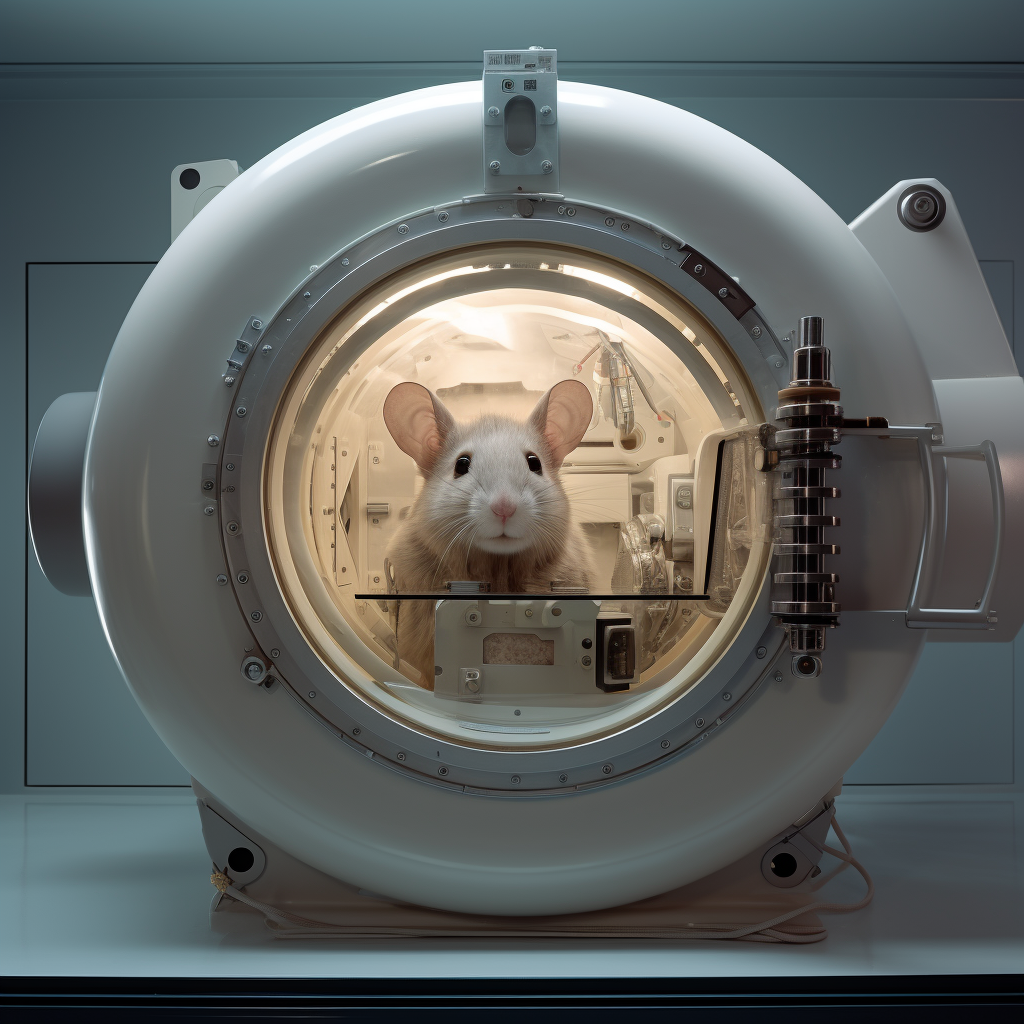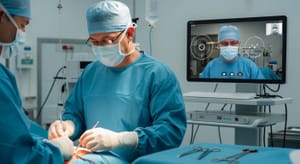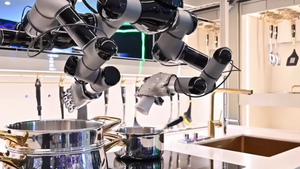The Information Age has undeniably revolutionized connectivity, but as surgeon Nadine Hachach-Haram highlights, its potential to solve critical global challenges is far from exhausted.
While multi-million dollar surgical robots represent a significant leap in healthcare technology, a staggering five billion people still lack access to basic safe surgical care. This isn't just a problem for developing nations; even the US faces a looming surgeon shortage.1 The solution, as Hachach-Haram compellingly argues and demonstrates, may lie in the ubiquitous technology many of us carry in our pockets, supercharged by augmented reality (AR) – a more accessible pathway to remote surgical expertise that complements and, in some ways, democratizes the benefits pioneered by robotics.
she interacts live in a surgery room during her talk!
Robotic Surgery: Pioneering Precision and Remote Possibilities
Robotic surgery has been a game-changer in the medical field.2 Systems like the da Vinci have introduced unprecedented precision, allowing surgeons to perform complex procedures with enhanced dexterity and visualization, often through minimally invasive techniques.3 Crucially, as Hachach-Haram points out, robotics introduced the groundbreaking concept that a surgeon doesn't need to be physically at the patient's bedside.
This idea of "remote surgery" opened a conceptual door: if a surgeon can control a robot from a console, what other technologies can bridge the distance between expert and patient?
Augmented Reality: The "Magic Ingredient" for Accessible Remote Surgery
Imagine an expert surgeon virtually "teleporting" into an operating room thousands of miles away, not via a complex robotic interface, but through a simple tablet or computer. This is the reality Hachach-Haram's work is bringing to life. The "magic ingredient" is augmented reality collaboration software.
This technology allows an experienced surgeon to:
- Visualize the surgical field remotely through the eyes of a local clinician equipped with a standard camera (on a phone, tablet, or simple webcam).
- Interact practically and visually, using AR to superimpose their hands, instruments, or guiding marks onto the local clinician's view.
- Mentor and guide the on-site doctor step-by-step, demonstrating techniques, identifying anatomical landmarks, and providing real-time feedback.5
As demonstrated in Hachach-Haram's live AR-assisted knee surgery, an expert can direct incisions and navigate anatomy with remarkable clarity, using nothing more than a laptop and webcam on their end.
This isn't about replacing the need for skilled local practitioners, but about empowering them with world-class expertise, instantly.
Connecting AR and Robotics: A Spectrum of Solutions
Rather than seeing AR-assisted remote surgery as a competitor to robotics, it's more accurate to view it as a complementary solution on a spectrum of technological intervention.
- Robotic surgery excels in procedures requiring extreme precision and where the capital investment is feasible.6 It pushes the boundaries of what's surgically possible.
- AR-assisted remote surgery excels in accessibility, scalability, and cost-effectiveness, particularly for training and extending routine and specialized surgical care to remote areas. It leverages existing, affordable technology (smartphones, tablets, internet connectivity) to bridge vast geographical and skills gaps.
Indeed, AR is also beginning to be integrated with robotic surgery, providing surgeons with enhanced visualization by overlaying 3D anatomical models or critical information directly onto their view during robotic procedures.7 This synergy shows how different technological approaches can converge to improve outcomes.
The Impact: Democratizing Surgical Knowledge and Care
The benefits are profound:
- Democratized Access: Expertise is no longer confined by geography.8 Patients in remote or underserved areas can benefit from the knowledge of leading specialists.
- Enhanced Training: Local doctors and surgeons can be trained and mentored remotely by experts, rapidly upskilling the global healthcare workforce. Dr. Soraya in Peru, guided via AR, was able to perform 30% more cleft lip and palate surgeries with fewer complications and eventually operate independently.
- Reduced Costs and Travel: Patients can receive care locally, reducing travel burdens and expenses. Hospitals can leverage existing talent more effectively.
- Scalability: With more mobile devices than people on Earth, the potential reach of AR-assisted remote surgery is truly global, especially as Wi-Fi (Starlink is plays a huge role) and mobile technology continue to expand.9
- Versatility: The applications span various procedures, from skin cancer surgery and trauma treatment to complex cancer removals and even wound care management by nurses.
The Road Ahead
Cost will come down, availability will become matter of competition not scarcity. At this time time to train and to keep the medical equipe current has costs that not even the overblown US care can offer. However, there's a real chance that this particular remote scenario might enable what in the software world is often called the "killer app". This application goes a step further, using AR to overlay a patient's own diagnostic scans (like CT or MRI images) directly onto their body during surgery.
Surgical Navigation (AR as "X-Ray Vision")
The surgeon, often wearing an AR headset like a Microsoft HoloLens, can see the patient's internal anatomy—like bones, blood vessels, or tumors—in 3D, precisely where it is in real-time.

- Spine Surgery (Augmedics' xvision): The FDA-cleared
xvision Spine Systemis a prime example. Surgeons at institutions like Johns Hopkins and Rush University Medical Center wear an AR headset that superimposes a 3D model of the patient's spine from their CT scan onto their direct field of view. This allows them to see the precise trajectory for placing pedicle screws, enhancing accuracy and improving safety by avoiding critical structures like the spinal cord. - Neurosurgery and Otolaryngology (UC Davis Health): Surgeons at UC Davis Health use AR goggles to project 3D reconstructions of a patient's CT and MRI scans during complex procedures. This helps them visualize hidden blood vessels, plan their surgical approach for tumor removal, and precisely place implants within the skull, acting as a real-time, 3D anatomical roadmap.
- Orthopedic Surgery (Enovis' ARVIS®): The
ARVIS®(Augmented Reality Visualization and Information System) is an FDA-cleared headset specifically for hip and knee replacement surgery. It provides the surgeon with real-time, hands-free surgical guidance, essentially turning standard instruments into smart instruments by tracking them in relation to the patient's anatomy.
Ultimately, this isn't about the novelty of the technology. It's about a fundamental principle: a patient's chance at a successful outcome shouldn't be dictated by their zip code.
This technology tears down the walls of the operating room, allowing us to put an expert's eyes and guidance into any surgeon's hands, anywhere in the world. It’s about elevating the skill of the doctor on the ground to provide safer care for the person on the table. That’s the only metric that truly matters.








